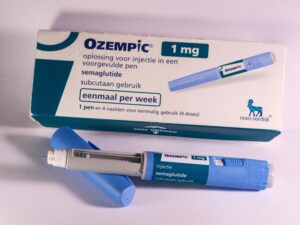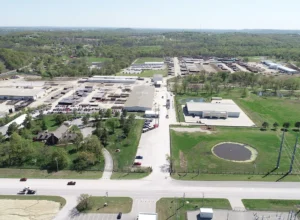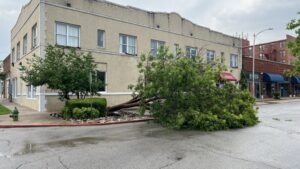Harrowing headlines that the novel Coronavirus is mutating to become more contagious may be somewhat misleading. While it is true that recent studies have shown that the SARS-CoV-2 has indeed mutated, it is not necessary to panic.
In March, David Montefiori, who directs an AIDS-vaccine research laboratory at Duke University in Durham, North Carolina, collaborated with Bette Korber, an expert in HIV evolution and a computational biologist at the Los Alamos National Laboratory (LANL) in New Mexico.
Together, they analyzed thousands of SARS-CoV-2 genomes (a genome is the “map” for the sum total of genetic material in an organism) searching for mutations.
RNA viruses, such as SARS-CoV-2, HIV, and influenza are prone to make quick replication errors while they are copied inside their hosts because enzymes that replicate RNA are prone to making errors. As a matter of fact, RNA viruses tend to mutate approximately one million times more rapidly than human genes, but SARS-CoV-2 is mutating five times less rapidly than the influenza viruses and much more slowly than HIV. This is thought to be because of a “proofreading” enzyme that prevents fatal copying errors. According to Nextstrain, an open-source project that follows the evolution of pathogens, SARS-CoV-2 is averaging two single-letter mutations per month.
It should be noted that many articles refer to new “strains” of the novel virus. Biologists, on the other hand, only use the term to apply to a pathogen that has undergone major genetic changes. Minor mutations as seen in the SARS-CoV-2 virus result in what is more aptly called a “variant.” The current variants today are 99.95 percent the same as the original virus that emerged from Wuhan, China. According to Lucy Van Dorp, a computational geneticist at University College London, “two SARS-CoV-2 viruses collected from anywhere in the world differ by an average of just 10 RNA letters out of 29,903.”
However, one mutation in the study proved to be quite prolific. Korber saw the mutation appear repeatedly in samples from COVID-19 patients. This mutation involves the spike protein, which the virus utilizes to infect a human cell. It then changes the amino acid at position 614 from aspartic acid (D) to glycine (G), because of a replication error that changed a single nucleotide (the basic building block of DNA or RNA) in the virus to nearly 30,000 nucleotide chains. Virologists call this variation the D614G mutation.
Korber, Montefiori, and others warned in a March 2020 preprint posted to the bioRxiv server that “D614G is increasing in frequency at an alarming rate.” The paper also stated that the D614G mutation represented a “more transmissible form of SARS-CoV-2” and that it was a product of natural selection.
Researchers at Houston Methodist Hospital released a study of more than 5,000 SARS-CoV-2 genomes that shows that the virus continues to mutate, but the D614G mutation is now pervasive and may have made the virus more contagious. The recent report, however, did not demonstrate that any of these mutations have made the virus deadlier or changed patient outcomes.
An analysis of 25,000 SARS-Co V-2 genomes was published earlier this month by scientists in the United Kingdom, and like the Houston study, postulated that the spike mutation is driving the increased spread of this variant. In the second outbreak in Houston, genomic testing showed the new variant was present in 99.9 percent of the cases.
David Morens, a virologist at the National Institute of Allergy and Infectious Diseases, analyzed the Houston study and stated that as the virus has moved through the population, it is conceivable that it has become more transmissible, and that “may have implications for our ability to control it.” Morens said the virus could potentially be adapting to interventions such as masks and hand washing.
“Although we don’t know yet, it is well within the realm of possibility that this coronavirus, when our population-level immunity gets high enough, this coronavirus will find a way to get around our immunity. If that happened, we’d be in the same situation as with the flu. We’ll have to chase the virus and, as it mutates, we’ll have to tinker with our vaccine,” Morens said. However, he cautioned this was a single study and not to read too much into it.
A study by Cold Spring Harbor Laboratory, published in the pre-print journal Bio Rxiv, concludes that the D614G mutation does not make the virus more contagious
Peter Thielen, a molecular biologist at the Johns Hopkins University Applied Physics Laboratory, said more studies will need to be conducted to see if the new virus mutations identified by the Houston researchers change the “fitness” of the virus, “and if SARS-CoV-2 transmissibility is truly increased as a result of these mutations.”
In an email on September 23rd, Jeremy Luban, a virologist at the University of Massachusetts Medical School, said, “the Houston paper highlights the fact that, with respect to SARS-CoV-2, we need to remain vigilant, and increase our capacity to monitor the virus for mutations.”
Timothy Sheahan, a coronavirologist at the University of North Carolina at Chapel Hill said, “The jury’s out. This mutation might mean something, or it might not.”










